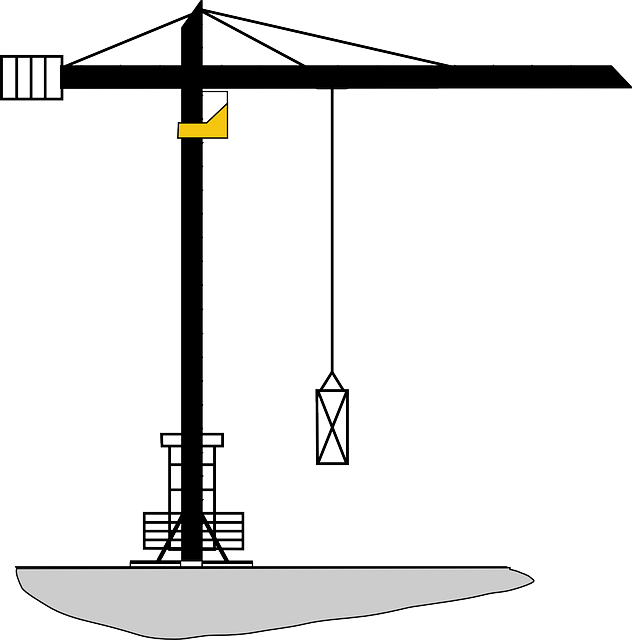Understanding and optimizing your website's structure is crucial for modern SEO. A well-organized hierarchy, aided by a site structure SEO plugin, signals topic importance to search algorithms, enhancing navigation and content accessibility. These plugins streamline processes like sitemap creation, interlinking relevant pages, and optimizing internal links, improving user experience and boosting website authority. By strategically placing links with descriptive anchor text and evenly distributing 'link juice', you can significantly improve search result visibility. Regularly measuring and analyzing internal link performance ensures your site's architecture remains effective, driving organic traffic and reducing bounce rates. A robust plugin helps organize content into meaningful clusters, improving crawlability and user experience, ultimately boosting SEO authority and visibility.
In today’s digital landscape, understanding site structure is paramount for optimal search engine optimization (SEO). A well-architected site structure not only enhances user experience but also acts as a backbone for effective internal linking—a powerful strategy driving SEO success. This article explores the intricate relationship between site structure and internal linking, backed by insights on choosing the best SEO plugin, optimizing content with strategic links, measuring performance, and maintaining a healthy internal link profile.
- Understanding Site Structure and Its Role in SEO
- The Power of Internal Linking for SEO Success
- Choosing the Right SEO Plugin for Efficient Internal Linking
- Optimizing Content with Strategic Link Placement
- Measuring and Analyzing Internal Link Performance
- Best Practices for Maintaining a Healthy Internal Link Profile
Understanding Site Structure and Its Role in SEO

Understanding your site’s structure is a cornerstone of effective modern SEO practices. A well-organized site structure acts as a roadmap for both users and search engines, enhancing navigation and improving accessibility to content. This hierarchical arrangement of pages and categories signals to search algorithms the importance and relevance of specific topics, boosting the overall authority of your website.
Utilizing a site structure SEO plugin can significantly streamline this process. These tools help you create a logical sitemap, interlink relevant pages, and optimize internal links for better user experience and SEO optimization. By implementing strategic site structure SEO tips, such as ensuring a clear hierarchy, using descriptive anchor text, and keeping link juice distributed evenly throughout your site, you can substantially improve your website’s visibility in search results.
The Power of Internal Linking for SEO Success

The power of internal linking lies in its ability to enhance site structure and significantly boost your SEO efforts. By strategically connecting relevant pages within a website, you create a seamless network that allows search engines to crawl and understand your content more effectively. This, in turn, leads to improved visibility on search engine results pages (SERPs), as Google prioritizes websites with robust internal linking structures.
Using a site structure SEO plugin can streamline this process by automatically generating anchor text, optimizing link placement, and ensuring every page is reachable from multiple points within the site. It’s not just about improving accessibility; it’s also about signaling to search engines which pages are most valuable and relevant. This strategic approach, when incorporated into a comprehensive site structure SEO strategy or tutorial, can drive more organic traffic, lower bounce rates, and ultimately contribute to a successful online presence.
Choosing the Right SEO Plugin for Efficient Internal Linking

Selecting the appropriate SEO plugin is a strategic move to optimize your site’s structure and internal linking, thereby enhancing search engine visibility. Not all plugins are created equal; thus, understanding your website’s unique needs is paramount. Look for a tool that seamlessly integrates with your content management system (CMS) and offers features tailored to improve site architecture and inter-page connections.
A top-tier SEO plugin should provide site structure SEO tips and optimization capabilities, allowing you to create a logical sitemap and efficiently link relevant pages. This ensures search engines can crawl and index your website effectively. By choosing the right tool, you can streamline your internal linking process, making it easier to connect related content while reaping the benefits of improved SEO performance.
Optimizing Content with Strategic Link Placement

Optimizing content with strategic link placement is a cornerstone of modern SEO practices. By incorporating internal links into your site structure, you create a seamless network that helps search engines understand your website’s hierarchy and relevance. A well-structured site map, often assisted by a powerful SEO plugin, ensures that each page is accessible to both users and crawlers, enhancing the overall user experience.
Implementing a strategic site structure SEO strategy involves carefully selecting anchor text and placing links in contexts that provide value to readers. This approach not only boosts page rankings but also improves click-through rates, leading to better engagement metrics. Through these site structure SEO tips, you can transform your website into a dynamic resource where each page supports others, creating a harmonious web of knowledge that keeps visitors coming back for more.
Measuring and Analyzing Internal Link Performance

Measuring and analyzing internal link performance is a critical step in optimizing your site structure for SEO. Using a robust site structure SEO plugin, you can gain insights into how well your internal links are working. These tools provide data on click-through rates (CTRs), referrer information, and user behavior, enabling you to understand which links drive the most traffic and engagement. By identifying high-performing links, you can prioritize them in your SEO strategy, ensuring that valuable content is easily accessible to users.
Site structure SEO optimization isn’t just about improving search rankings; it’s also about enhancing user experience. Analyzing internal link performance helps you identify broken or inactive links that might be hindering navigation and negatively impacting your site’s overall health. Through regular monitoring and strategic adjustments, you can keep your site structure SEO tips current, ensuring that both users and search engines find what they’re looking for efficiently.
Best Practices for Maintaining a Healthy Internal Link Profile

Maintaining a healthy internal link profile is crucial for effective modern SEO practices. A well-structured site architecture, facilitated by a robust site structure SEO plugin, ensures your website’s content is easily navigable both for users and search engines. This involves creating a logical flow of links within your pages, prioritizing important content with relevant anchor text that accurately represents the linked page’s topic. Regularly reviewing and updating internal links to reflect changes in your content or industry trends is essential for optimal SEO optimization.
Implementing a strategic site structure SEO strategy involves categorizing content into meaningful clusters based on shared themes or topics. This not only improves crawlability but also enhances user experience by providing relevant content suggestions. By focusing on a clear and organized site structure, you ensure that your website’s internal linking profile appears natural to search engines, thereby boosting its authority and visibility in search results.
